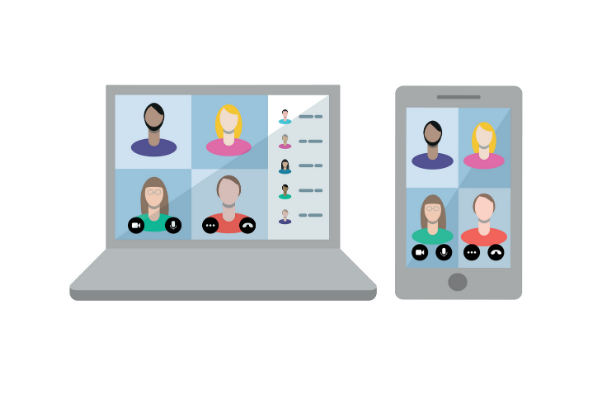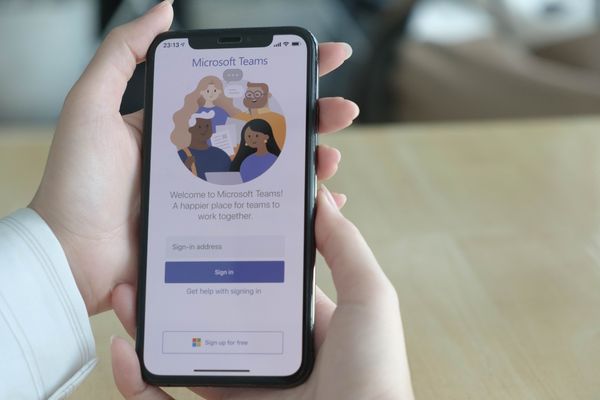Insights
INSIGHTS
All Topics
My Account
Why voice communication matters more than ever
11 Feb 2021by Aidan Paterson
With an increasing number of communications methods available to charities, we examine the role of voice communication in the modern charity sector
2020 was a whirlwind year that saw sweeping changes in the charity sector.
Charities embraced digital in a big way and it has changed how non-profit organisations work. All areas of charity operations have been transformed: from service delivery to fundraising. But the most dramatic change has been in communications.
Comms are at the heart of everything charities do. Comms staff pull an organisation’s entire operation together, working with both supporters and service users.
During the pandemic, this work has been more important than ever. Our timelines and feeds are flooded with content, and it can be hard to find the information we need. For charities working with vulnerable service users, this is a matter of urgency.
Charities need to harness a range of comms solutions to overcome the lockdowns, closures, and social distancing restrictions associated with the spread of COVID-19.
How does voice fit in to this range of solutions?
The way we communicate has changed
The pandemic has changed every aspect of how we communicate.
During the pandemic, we have all spent more time online, and it has made us more demanding consumers of digital media. As we have come to rely more and more on digital channels to meet important needs, we have raised our expectations.
In the past, supporters may have been willing to deal with clunky, outdated charity platforms, and to make excuses for poor charity comms. This is no longer the case.
The effects of changing supporter expectations were compounded by the logistical challenges of the pandemic. Many charities made the switch to remote working, which limited their options for communications and service delivery.
Yet discussion within the sector has continued to focus on the need for human connection in services.
Voice communication is at the centre of this dilemma. Voice offers distinct value when compared with other comms channels. But it can demand a heavy share of resources.
For many people working in charity comms, this poses an important question.
How can charities balance the restrictions placed upon them by remote working with a need to include a human element in comms strategies?
The importance of multi-channel comms
Most discussions of the charity sector tend to put non-profit organisations in the same boat.
This way of looking at things can be unhelpful. While all charities will look to deliver the best possible service to their beneficiaries, this will manifest differently from one organisation to another. The service user needs of an environmental charity will be distinct from those of a mental health organisation’s beneficiaries.
In the simplest possible terms: different people have different needs.
The modern charity comms strategy is based around offering a raft of different options to cater to those different needs. The wider the offering, the more people you are likely to engage.
But not all charities have the resources to do this. If you can only provide a few methods of communication, then it is best to identify what the preferred methods are among your user base.
The continuing role of voice communication
With so many flashy new options available to charities, it can be easy to overlook the unique value that voice communication still offers.
Voice communication remains vital for many types of service user-led charity work. This can be seen in any service running a helpline.
Voice communication offers benefits to these services that other forms of communication cannot match. Many of these helplines work with people experiencing difficult or traumatic life events. The human element of voice communication allows for empathy and connection in a way that artificial methods cannot match.
For helplines dealing with potentially stigmatised issues, such as abuse or addiction, voice can help strike the perfect balance. It establishes trust while preserving anonymity. Many people in such situations only feel comfortable communicating in certain ways. Charities that can offer a range of comms channels will have the greatest impact.
One of the issues that the pandemic has brought renewed awareness to is the situation that many older people find themselves in.
Older people, particularly those over the age of 75, are at an increased risk of loneliness. This can have a serious effect on physical and mental health.
More than two million people in England over the age of 75 live alone, and more than 200,000 say they go for over a month without speaking to a friend, neighbour, or family member.
Nearly 1.2 million older people in the UK say they’re chronically lonely. Roughly 3.9 million say that TV is their main form of company.
There are a number of reasons why older people become socially-isolated, such as difficulty with mobility, no longer being the hub of their family, leaving the workplace, the deaths of spouses and friends, or through disability or illness.
While plenty of tech-savvy older people have embraced more modern communications technologies, it can be difficult to engage older service users on newer channels. Therefore, voice communication remains the most important method of remote communication.
But this does not mean that the charity must remain tied to costly and inefficient landlines. While service users may prefer to dial-in via a traditional phone set-up, charities can digitise this process from their end via a VoIP cloud voice comms solution such as Teams Voice. This solution lets organisations make and receive external calls through the Microsoft Teams. Teams Voice can take the place of their existing phone system, saving charities time and money.
The benefits of such a solution are clear. Charities get a unified system for all their communications (both internal and external). This means one single application for video meetings, instant messaging, file sharing, and collaboration – with calls to and from people outside the organisation seamlessly included. This means there are no new systems and apps to learn if your users are already familiar with the Microsoft suite, and it is efficient to carry out tasks in the same platform without switching back and forth between apps.
Users can make calls from any device or location with no specialist equipment needed. You can choose to use headsets or go hands-free, from the app, browser, or a mobile device. This makes it a lot more convenient for users working from home.
How charities can meet the demand for voice communication
While voice communication has plenty of benefits, it also has its drawbacks.
The primary drawbacks is that voice communication requires a lot of personnel resources and can also pose logistical challenges for a remote workforce.
A digital call management solution can address both concerns.
One example of a charity using this solution to improve its voice communication services is Cats Protection.
For Cats Protection, every call is critical; it could be a member of the public desperate for its help and support or a donor looking to pledge essential funds. In this way, Cats Protection provides a good model for other charities that have these two comms needs in some form.
The organisation found themselves struggling to cope with call volume. This led to unacceptable waiting times and an increasing number of calls being left unanswered.
As an existing user of Cirrus’ Cloud Contact Centre, Cats Protection turned to its partners, Class Networks, for help.
Rather than just accepting that this was a volume issue, Cirrus and Class Networks took the time to thoroughly review the operation, in order to understand the root causes of the problem.
Despite over 60% of calls originating from mobile devices, Cats Protection lacked a self-service solution to provide callers information. A significant number of these calls related to a common set of enquiries. These could be answered through a self-service capability or optimised through the use of chat.
Through Cirrus Cloud Contact Centre, Cats Protection has been able to digitise its contact handling across the whole organisation. Volunteers in local branches have access to the tools and knowledge they need to be able to handle calls more effectively, relieving pressure on the contact centre and ensuring that more calls are resolved first time.
By sifting through enquiries digitally, Cats Protection is able to reduce the amount of resources necessary to respond to everyone. They are then able to dedicate more time to dealing with the enquiries where voice is most important. This allows them to deliver maximum value to their service users.
Learn More
Learn more about how Teams Voice can empower your charity comms
Aidan Paterson
More on this topic
Recommended Products
07 Mar 2025by Ioan Marc Jones
A-Z incredible fundraising ideas for charity
07 Mar 2025by Ioan Marc Jones
An A-Z glossary of service delivery terms and definitions
Our Events
Charity Digital Academy
Our courses aim, in just three hours, to enhance soft skills and hard skills, boost your knowledge of finance and artificial intelligence, and supercharge your digital capabilities. Check out some of the incredible options by clicking here.


















